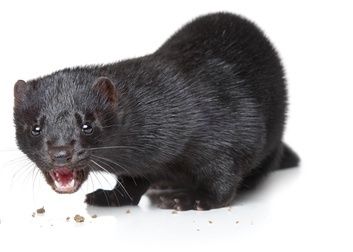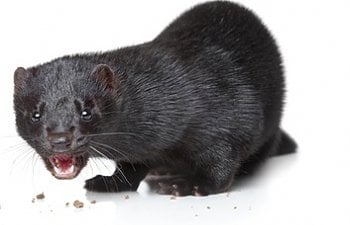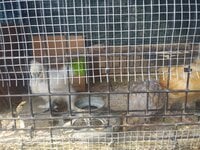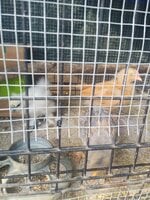
General Information & Description
Minks belong to the Mustela family, which also includes stoats and weasels. Minks come in different names like Ermine, Sable, Minque Nordique, and Sable Nordique. The mink has a hairy and large tail that complements its long body. Its build makes it easier for a mink to intrude the dens of its prey. The carnivorous mink feeds on fish, birds, frogs, rodents and crustaceans. Minks are solitary hunters and will only be spotted with their mates during mating, or when nurturing their young. Minks are fast when moving on land, and are adept in climbing. They are also excellent swimmers and can dive down to a depth of 30 cm.
Range
Minks are found in different parts of North America, from as far north as Canada and Alaska through the United States except for the state of Arizona. In the US, minks are prevalent in the states of Nevada, California, Utah, California and the western side of Texas. Minks prefer to live near bodies of water like ponds, marshes, canals, lakes, and streams. These animals are also known to travel a lot and can live far from water.
Methods of Kill
Male minks run and hunt instead of rearing their young. Minks are vicious predators of chickens and other birds. They are known for their propensity to kill every chicken and bird in an area or pen. However, minks do not eat every chicken they prey on. They only want to drink the blood of their prey, and this is their motivation for killing every bird they can find. Despite their size, they have the quickness to surprise chickens. Their athletic prowess allows them to jump at chickens and grab the throat. With their long body and athletic ability, they can squeeze in any pen and attack on a bird easily. Minks can also attack anytime of the day and won’t hesitate to come back for more preys when it sees the opportunity to strike.
Prevention & Treatment
If you suspect or know you have a mink visiting setting a live trap can help. Setting a trap entails putting it out with bait that will attract minks, such as fish or fresh meat. Bloody meat will work well, due the mink's propensity to after bloody and wounded animals. A dead mouse will also attract a mink. To keep your flock flock safe, keep them in a secure coop with no gaps big enough for them to gain access through. Minks can crawl through holes and gaps as small as 1 inch in diameter. Minks are also excellent in digging allowing them to go through the hen house and go through the basement. Throwing a concrete floor for the coop and placing paving slabs along the perimeter of the run will help deter them. Also burying some welded wire or hardware cloth along the bottom of the fence would slow down any predators trying to dig their way into your run. If you have any windows in your coop it's a good idea to cover them with hardware cloth as well.
The Mink ranked number 7 in our Worst Predator Poll! Take a look at the results here!
For more discussions on other predators and how to deal with and deter them see the Predators and Pests section of the forum.



